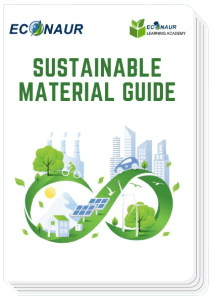Roof Vent is Important for a Sustainable Building !
Roof vents are also called attic vents; these vents ensure there is a good amount of airflow and ventilation in your attic. Roof vents play a critical role in the proper functioning of your entire home for a number of different reasons.
Air intake and exhaust vents are used in ventilating steep-slope roof assemblies to provide a means of allowing outside air to enter and exit attics and ventilation spaces.
Intake Vents: Air intake vents are used to allow outside air to enter into attics and ventilation spaces. Intake vents should be located along a roof assembly’s lowest eave at or near soffits or eaves.
Intake vents are best used with exhaust vents that are located at or near a roof assembly’s peak. This configuration of ventilation air intake along low points and exhaust at high points takes advantage of natural convection.
These increase the life of your roofing, permit the proper functioning of your heating and air conditioning system (HVAC), etc. Also, improper or insufficient ventilation can make your home prone to mold growth from locked-in moisture – this, in turn, may lead to serious health issues. Furthermore, poor ventilation also increases energy costs – which in other words means higher electricity bills. Owing to its importance, let’s find out what roof vents are all about and their significant role in making your home, energy-efficient and keeping you and your family healthy.
Why Is Ventilation Important When It Comes To Your Roof?
The very need for roof ventilation wasn’t documented well until the early-to-mid 20th century. That is when organizations like the American Society of Heating, Refrigerating & Air-Conditioning Engineers (formerly ASHVE) and Forest Products Laboratory documented that building condensation hitches could be produced by poor roof ventilation. Let us highlight the main purpose of Roof Vents:
Proper Roof Ventilation Helps To Keep The Attic Cool And Dry
Normal household activities like taking a shower, washing clothes, and running a dishwasher, all produce moist, warm air, which rises into the attic. When the warm and cool air hits, it condenses and wets the framing and insulation. If this wetness continues to build up without drying, it may result in the development of mold on the insulation and rafters of the roof. This can lead to extreme respiratory issues, and eventually, cause structural damage to the home’s roof.
When the roof is properly ventilated with the right type and number of roof vents, it can help in preventing moisture and heat issues.
Reduces Energy Costs.
When the outside temperature rises, we all wish to stay cool inside. If a house has a properly vented roof, it efficiently allows the heat to escape – this reduces the workload on your air conditioner.
So, it’s quite simple – when an air conditioner runs less it means lower electricity bills.
Extends The Life Of Your Roof
Extreme weather conditions take a huge toll on the roofs. Properly ventilated roofs benefit the roofs when it’s tremendously hot or cold outside.
When the outside temperature rises, it heats the roof – In fact, the temperature on the roof can nearly double. And a hot roof shed over badly vented attic results in an increasingly hot attic. You may ask why? This is because poorly ventilated attics do not have an escape route for the heat which eventually builds up. This continuous heat built up can damage the roof shingles inside out – decreasing the life of the roof. When a roof is evenly vented it allows the hot air to escape keeping both the roof and attic cooler – ultimately causing less damage to the shingles.
In colder regions ice damming happens when heat from inside the attic mixes with heat from the sun to melt the snow in your warm roof. This melts the snow and the resulting water runs to the edge of the roof, and it begins to refreeze. As the ice and water build-up at the edges of the roof, it can back up behind/underneath the roofing materials, causing damage to your whole roof system, your attic, and even inside the walls of your home.
A properly ventilation of the roof helps this warm air to escape before it gets the chance to melt the snow and ice on the roof. All in all, poor ventilation causes damage to the roof, hence it is crucial to ensure the roofs are properly ventilated.
You May Ask How Ventilation Works In A Home?
Ventilation works only when air flows. There are 2 main methods to create airflow within an attic:
- Mechanical – that requires a power source
- Natural – Whenever possible, natural roof ventilation is used. Here the stack effect and the wind effect work together to naturally circulate air.
The stack effect transpires when hot air rises and produces a higher pressure at high points in the attic. Hot air that escapes is known as exhaust. However, this hot air cannot escape without an inlet for cooler, low-pressure air. The cool air that enters is referred to as intake. When the wind blows against the outside of a roof and increases the volume of intake and exhaust, it is known as the wind effect. Intake and exhaust generate the natural flow of air to create a well-vented attic.
Types Of Roof Vents
Typically, there are 2 basic kinds of attic/roof vents i.e. intake vents and exhaust vents.
1. Intake Vents
These are placed along the soffit to allow fresh air directly into the attic. The common types of intake vents are:
Gable – This type of vent is found on either side of your home, beneath the peak of the roof, and on the siding. They can help the airflow out of your attic while preventing moisture or snow from entering.
Static – These are made of a sheet metal cylinder with a flashing collar and a metal hood to keep rainwater out. Holes are cut in the face of the roofs and these are installed in rows. The effectiveness of static roofs depends on how many are installed; one of the biggest disadvantages of this roof is penetration, as they are prone to leakage.
Soffit – A soffit vent is perforated but installed the same way that a solid soffit is. They are either fitted continuously or between the rafter tails. These offer improved airflow during the summer and protection against ice and moisture buildup in the winter months.
2. Exhaust Vents
These are installed in the upper third of the roof to allow attic air to escape. The different types of Exhaust vents are:
Static vents – these include ridge vents that allow the air to escape. These are installed along the ridge of the roof. They offer uniform ventilation through the home’s attic. These are available in several lengths and widths and can be fit to work with a range of roof pitches. Ridge vents are considered the most efficient and cost-effective.
Power ventilators – These types of roof vents suck out air from the attic. They are turbine vents that consist of a turbine mounted on a sheet-metal cylinder. They are installed like roofline vents along the face of the roof. When the wind blows, it spins the turbine, which in turn draws air up out of the attic. Their effectiveness, naturally, depends on whether the wind is blowing or not.
Understanding how roof vents work is highly technical, it is advised that if you don’t know how your roof vents work, or if you’re unsure about your attic ventilation in general, then you should talk to a roof inspector about your current system and any inherent weaknesses that may be at work. The risk/reward for having no ventilation or poor ventilation, along with the negligible cost of installing a good-working ventilation system makes them one of the unforgivable sins of home maintenance negligence.

Want to improve the indoor air quality of your home, Buy or Submit Inquiry for products. Check here.








